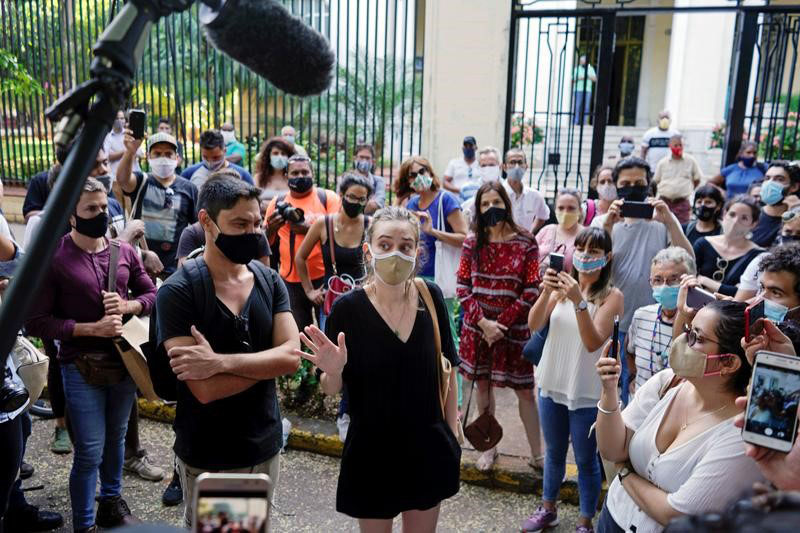HAVANA, (Reuters) – A rare public protest in Cuba of more than 300 artists, activists and members of the public outside the culture ministry to denounce repression and censorship ended early yesterday after demonstrators said they agreed with officials to open an unprecedented dialogue.
Thirty of the protesters including performance artist Tania Bruguera and film director Fernando Perez met for more than four hours with Deputy Minister Fernando Rojas and said they had agreed to start a series of meetings to resolves differences.
The group said Rojas also agreed to review the cases of a rapper sentenced this month to eight months in jail on charges of contempt and a dissident artist detained since Thursday.
Cuba’s Communist government had previously dismissed both as mercenaries directed by its arch enemy the United States, as it generally does with dissidents.
Not all of the protesters outside the ministry were convinced by the non-binding reassurances, and were disappointed no officials came out to give a briefing on the meeting.
But most said it was already an historic achievement to have forced the government to talk with those who think differently and for some, broken the fear of speaking out in public in the one party state.
“It’s a special flame that ignited here today,” said activist and music promoter Michel Matos, who took part in the meeting with Rojas.
“We talked about freedom of expression, freedom of association, censorship and physical repression,” Matos said. “I don’t think there has been a dialogue like this in a ministerial space in 60 years.”
The government made no statement and did not immediately respond to a request for comment on the meeting.
The protesters included citizens who usually shy away from talking publicly about politics but felt emboldened to join after seeing images of the crowd on social media, underscoring how internet expansion in Cuba is making it harder for the government to contain dissent.
As their representatives met with officials inside, protesters outside the ministry sang and clapped every 10 minutes to show their solidarity.
“Without the pressure that you exerted outside, without your applause while we talked, without your shouts we would not have been able to arrive at these agreements,” Bruguera said.
Trucks carrying police and security forces surrounded the area. Other than at one point firing tear gas to try to prevent some protesters from reaching the ministry, they did not intervene.
The protest was sparked by authorities’ crackdown on the San Isidro Movement of dissident artists and activists to which Matos belongs that formed two years ago to protest curbs on freedom of expression, often through irreverent performances.The situation came to a head after authorities besieged the movement’s headquarters in Old Havana’s San Isidro district then on Thursday broke up a hunger strike there that had started to gain international attention.
Security forces forcibly removed and briefly detained the five members on hunger strike and nine other people in the house, citing violations of coronavirus protocols.
Those detained said their phones were seized so they could not transmit any footage of the raid.
Some Cubans reported that social media platforms in the country, where the state has a monopoly on telecommunications, were briefly shut down to prevent news of the raid from being shared online.






